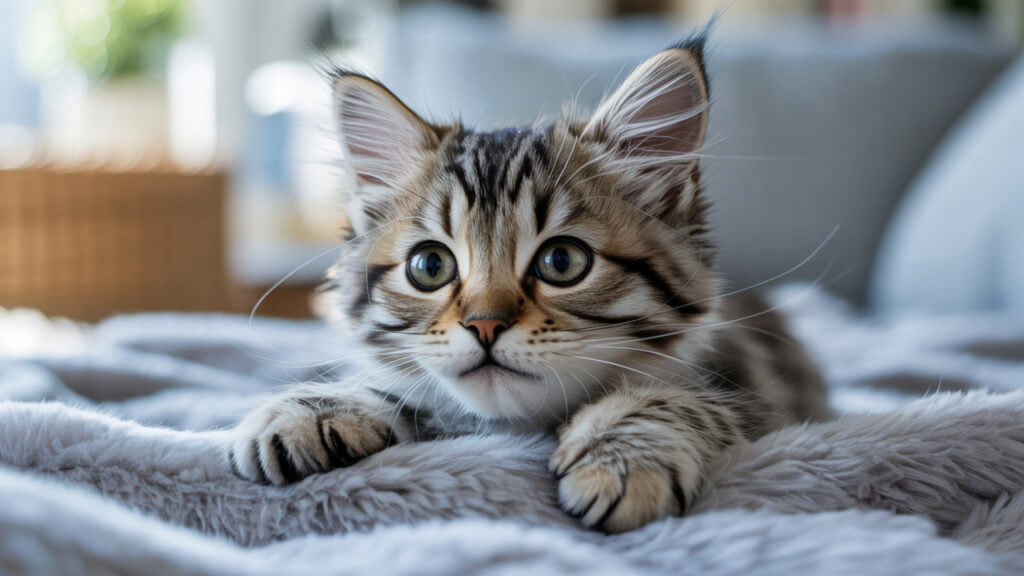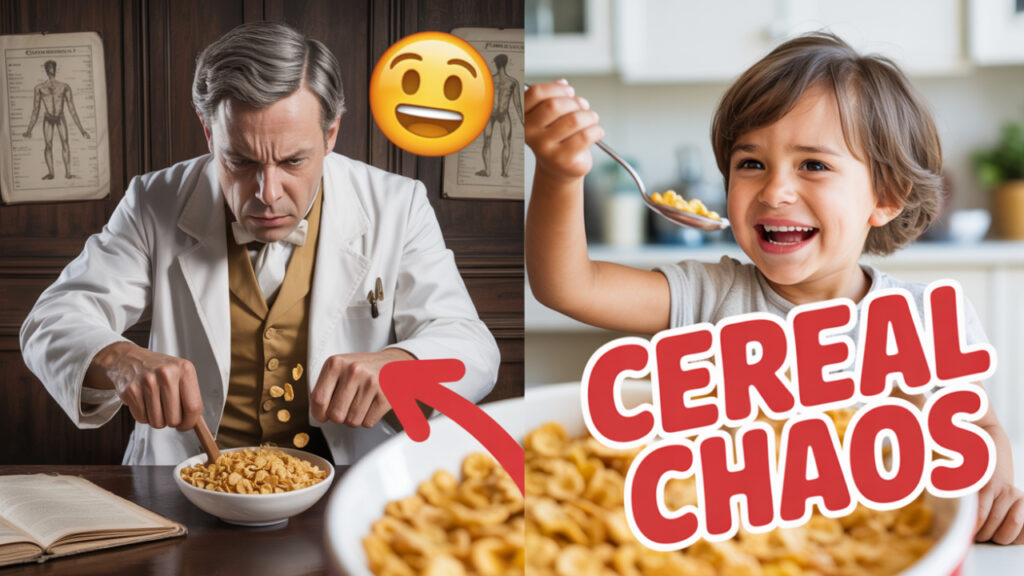Published on May 21, 2025 • Last Updated on May 22, 2025
What’s With the Biscuit-Making Ritual?
Imagine your cat hops on your lap and starts “making biscuits” on your thigh — eyes half-closed, purring like a motor.
It’s cute. It’s comforting. But also… it’s kind of weird.
Why do cats knead? Is it instinct? A love signal? A leftover from kittenhood?
Turns out, this fluffy behavior has a surprisingly primal past — and some theories get way darker than you’d expect.
⚡ TL;DR
- Kneading is a deeply rooted instinct that begins in kittenhood — but doesn’t stop there.
- It’s linked to scent-marking, survival behavior, and emotional bonding — not just comfort.
- Some cats knead when stressed, injured, or aroused — raising eyebrows among behaviorists.
- And that’s not even the weirdest part.
🎥 Watch This First: Why Cats Knead — Explained Quickly
In a rush?
This short video reveals the emotional, instinctual, and territorial reasons cats knead — using real footage, slow-motion shots, and expert commentary.
Whether it’s “making biscuits” or marking territory, this clip will change how you see every paw press.
Now that you’ve seen the behavior in action, let’s dig deeper into where kneading comes from — and why your cat might be doing it for reasons you’d never expect…
🐱 From Kittens to Claws: The Origin of Kneading

Before it was a comfort ritual, a quirky TikTok trend, or your cat’s favorite way to trample your stomach, kneading was a survival skill.
Newborn kittens knead their mother’s belly to stimulate milk flow. It’s instinctual — like a button that says “more milk, please.”
Eyes shut, bodies tiny and blind, they learn to associate kneading with warmth, food, and life itself.
But here’s the kicker: even after they’re weaned and long grown, cats keep doing it.
Why?
Some experts believe it’s a kind of neurological imprinting — the act is hardwired into their brain as a source of comfort.
Others say it’s more than comfort — it’s a message cats are constantly trying to send.
And not just to their mothers… but to you.
So why does this behavior carry over into adult life?
And what else is it signaling?
👉 Keep reading — because this innocent little paw-pushing act might be more primal, emotional, and territorial than anyone ever told you.
😻 More Than Just Cute: Why Kneading Really Matters
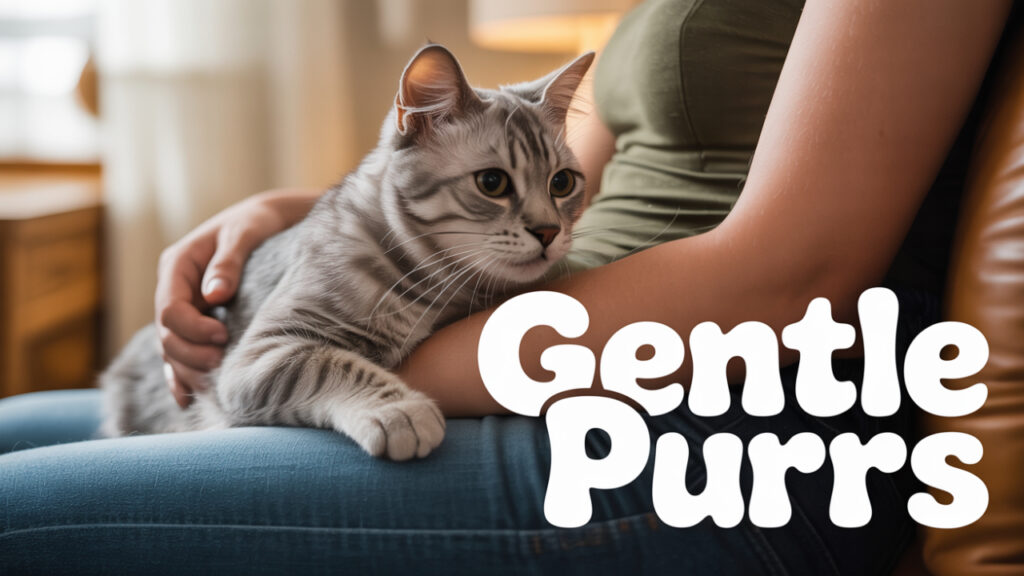
We tend to think of kneading as a cozy, harmless quirk — like a cat’s way of fluffing an invisible pillow.
But dig deeper, and you’ll find a fascinating mix of instinct, survival, and emotional code.
When your cat kneads you, they’re not just getting comfortable — they’re claiming you.
Each paw press releases pheromones from glands in their pads. That blanket? That lap? That soft sweater?
It’s marked now. Owned. Loved. Filed under “mine.”
In the feline world, scent is language. And kneading is how cats speak volumes without making a sound.
It’s territorial. It’s emotional. It’s intimate.
For some cats, it’s also a way of self-soothing during anxiety or change.
Like a child clinging to a blanket, they push their paws rhythmically, calming themselves through memory and motion.
And here’s where it gets deeper:
Cats don’t knead on just anyone.
When your feline companion chooses your lap as their biscuit-baking station, it’s not random —
it’s a signal of ultimate trust, vulnerability, and emotional bonding.
In other words: kneading isn’t just cute — it’s sacred.
But what if some cats knead too much? Or… for weirder reasons?
👉 That brings us to the twist you probably didn’t see coming.
🧠 When Kneading Gets Weird: The Hidden Truths Nobody Talks About
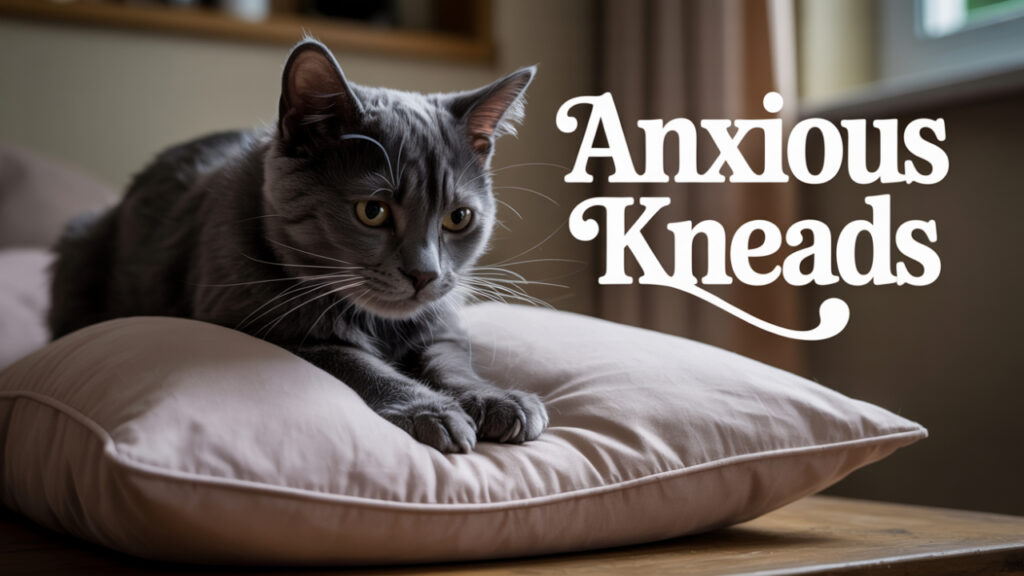
Here’s what most cat blogs don’t tell you:
Not all kneading is cute.
Some cats knead obsessively. Others drool while doing it.
And in some cases… kneading is a prelude to mounting behavior.
Yes — really.
Unneutered males and some females knead during sexual arousal.
The slow push-pull motion, the purring, the trance-like state — it can all be part of a hormonal loop.
And it’s not always aimed at other cats.
Blankets. Pillows. Even their favorite human’s leg.
Suddenly, that adorable biscuit-baking starts to look a little… awkward.
Then there’s kneading with claws fully extended — leaving you scratched, bruised, and confused.
Is it aggression? Pain? Some kind of glitch in the behavior?
Not quite. Many cats extend claws when they’re overstimulated or anxious —
and kneading becomes an outlet for pent-up energy or frustration.
Even more puzzling: some cats only knead when their owners are upset — like they’re picking up on emotion and trying to help.
Could kneading be a kind of emotional co-regulation?
Science hasn’t caught up. But one thing’s clear:
Kneading isn’t just one thing.
It’s comfort, communication, marking, mating… sometimes even emotional rescue.
👉 But where does science really land on all this? And what does the internet believe?
🔮 From Evolution to Reddit: The Theories Behind Kneading
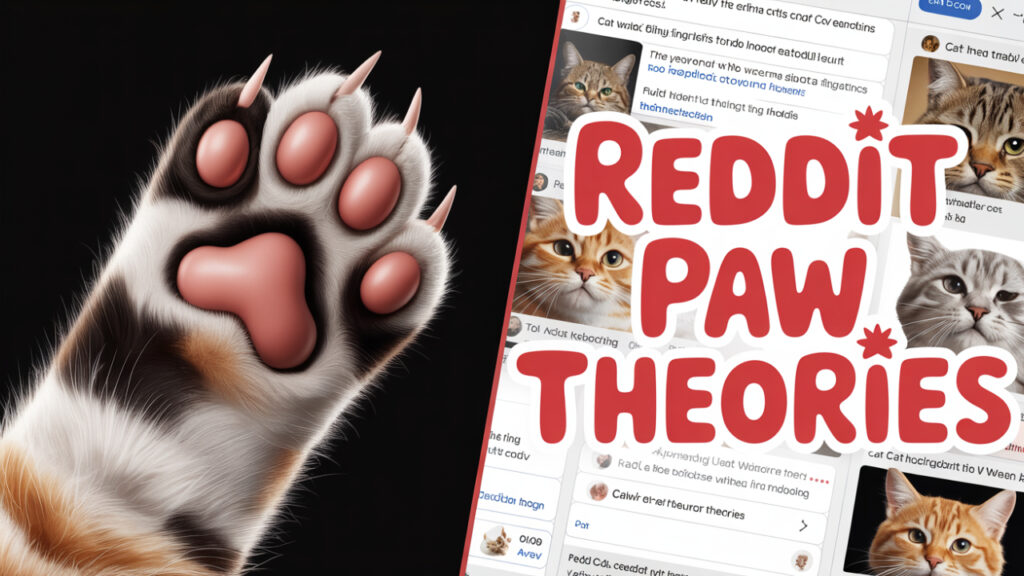
Why do cats knead? Ask 10 experts, and you’ll get 10 different answers — plus a dozen wild internet theories.
Let’s break them down:
1. The Evolutionary Imprint Theory
Most behaviorists agree: kneading begins at birth and never fully leaves.
It’s a neon sign from kittenhood, burned into the nervous system like muscle memory.
Dr. John Bradshaw, feline behavior expert and author of Cat Sense, believes kneading is a comfort-seeking reflex that persists because it works —
even if there’s no milk involved anymore.
2. Bonding & Scent-Marking
As noted earlier, paw pads contain scent glands, which is a part of cat communication techniques. Every knead leaves a chemical trail.
Some researchers compare it to dogs marking with urine — but far more subtle, elegant, and emotional.
Your lap? Claimed territory. Your blanket? A pheromone-soaked love letter.
3. Stress Response & Anxiety Regulation
Veterinarians report cases where kneading spikes during big life changes:
- New homes
- Vet visits
- Grief after a companion dies
In these moments, kneading becomes a feline coping mechanism — like rhythmic breathing in humans or rocking in children.
It’s self-regulation through touch and memory.
4. Reddit’s Weirdest Theories
Now for the unhinged internet takes…
“My cat only kneads right before I get sick. I think she knows.”
—u/pawssiblewitch
“It’s a memory from a past life. Like… they used to be bakers.”
—u/floofyprophet
“It’s definitely alien code. Morse biscuits.”
—u/spacecatelite
While wild, even these joke theories show how mysterious kneading still feels —
part biology, part magic, part misunderstood love language.
So what does the future hold for this behavior?
What are the bigger consequences of humans misunderstanding feline signals?
👉 Let’s zoom out — to see the broader impact and cultural legacy in What’s Next / Fallout.
🚀 Kneading into the Future: What It Really Means for Humans and Cats
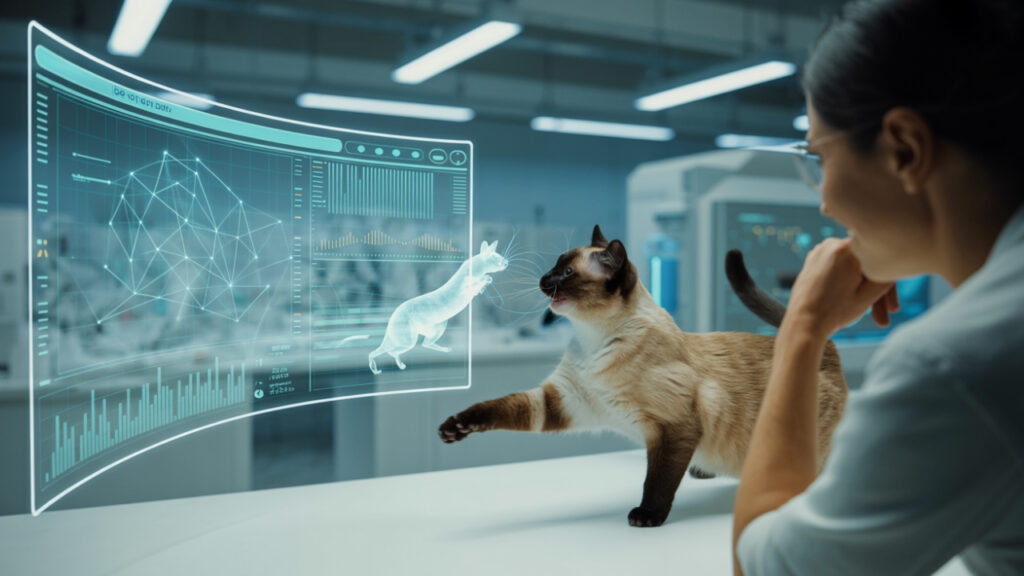
Kneading might seem small — but it reveals something massive about cats and their evolving place in our lives.
In a world where pets are becoming family, therapy, and even influencers, understanding their behaviors isn’t just curiosity —
it’s connection.
Kneading shows us that cats are emotionally complex, deeply sensory creatures.
And when we ignore or misread that behavior, we risk missing what they’re really trying to say.
Whether it’s comfort-seeking, stress relief, scent-marking, or even emotional mirroring —
kneading is a message. One that deserves to be heard.
And guess what?
Behaviorists believe we’ve only scratched the surface.
New studies are emerging. Tech is helping decode animal emotions.
And your cat? She might be kneading her way into a whole new era of human-animal communication.
😼 Wait… What If We’ve Got Kneading All Wrong?
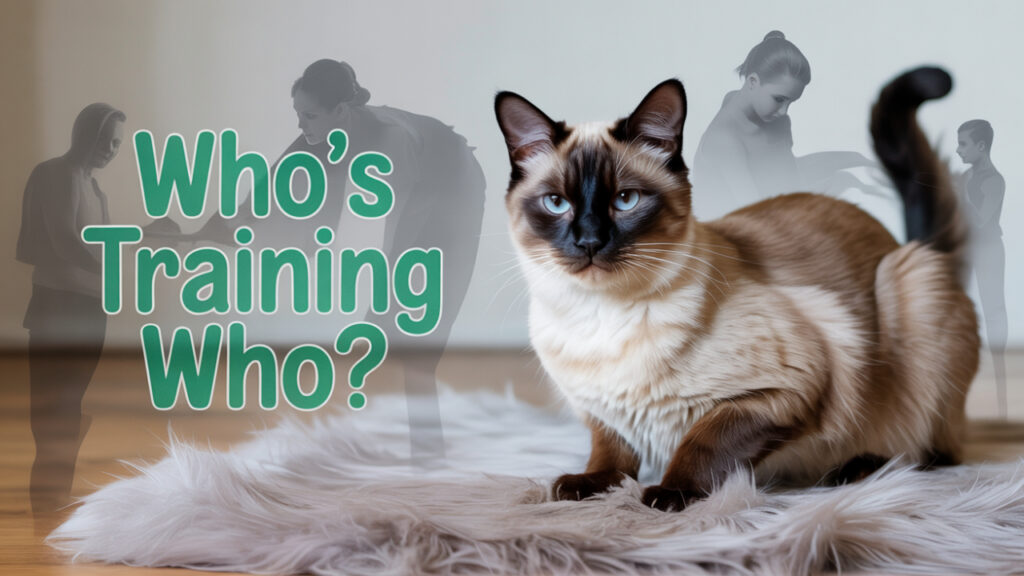
Here’s the thing: the “kittenhood imprint” theory might be totally backward.
Some researchers argue that cats learn to knead as a communication tool over time — not something they’re born with.
They point to cats that were:
- Bottle-fed (no natural nursing)
- Orphaned early
- Raised without feline contact
And yet, many of them still knead.
So if kneading isn’t hardwired… is it taught? Is it emotional? Is it a learned survival strategy?
Or maybe — just maybe — cats knead because we reinforce it.
When your cat kneads, you:
- Pet them
- Talk sweetly
- Give them space and warmth
It’s possible kneading isn’t just instinct — it’s social engineering.
👉 So what if kneading isn’t something cats do to us…
But something they trained us to love?
📥 Download This: “Cat Kneading Decoder”
Want to finally understand what your cat’s kneading really means — without guessing?
Download this free cheat sheet:
✅ 5 types of kneading and what they signal
✅ Quick checklist: Is it comfort, anxiety, or affection?
✅ Vet-approved insights and emotional flags
✅ Bonus: How to respond so your cat feels heard
Download now and stop misinterpreting your feline’s fluffiest habit.
🐾 So… What Is Your Cat Really Saying?
You thought it was just “making biscuits.”
But now you know — it’s claiming territory, relieving stress, and speaking an emotional language humans are only just starting to decode.
So next time your cat kneads you, ask yourself:
“What is it trying to say — and am I listening?”
❓ FAQs About Cat Kneading
Is it normal for adult cats to knead?
Yes! Most adult cats continue to knead as a comfort behavior. It’s a carryover from kittenhood — and a powerful emotional signal.
Why does my cat knead on me and purr?
That’s the ultimate sign of trust and bonding. Kneading + purring usually means your cat feels totally safe and affectionate.
Should I stop my cat from kneading with claws out?
Don’t punish — redirect. Offer a soft blanket or towel. If it becomes aggressive, it might be overstimulation or stress.
Do male cats knead more than females?
Not necessarily, but unneutered males may knead more often or during arousal cycles. Neutering can reduce this behavior.
Is kneading ever a bad sign?
If your cat suddenly starts kneading obsessively, especially with vocalization or stress, it could signal discomfort or illness.
Can I encourage kneading on something softer?
Absolutely. Try fleece, microfiber blankets, or designated “kneading pillows” — many cats adapt quickly.
Love’s cabin Round Donut Cat and Dog Cushion Bed
Ultra-soft round cat bed designed for pets that love to knead, curl up, and feel safe. Anti-slip bottom, machine washable, and water-resistant — ideal for comfort-seeking cats and small dogs.
💼 Tools You’ll Actually Use
These are trusted platforms we personally use and recommend. They can help you level up your listening, freelancing, or online privacy.
🔒 This post contains affiliate links. If you click and buy, we may earn a small commission — at no extra cost to you. Thanks for supporting the site!

Jonathan Gron is the founder of OwlRatings.com, where he reviews and ranks the best products to help smart shoppers make informed decisions. With years of experience in content strategy, consumer research, and SEO, Jonathan specializes in turning complex comparisons into clear, trustworthy guides. When he’s not analyzing gear, you’ll find him deep in a rabbit hole of emerging tech or brewing a perfect cup of coffee.

